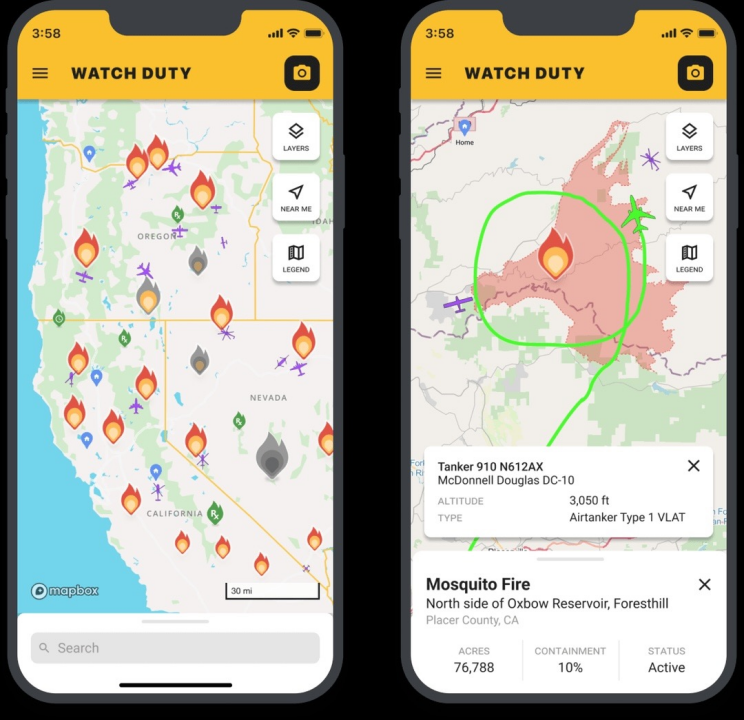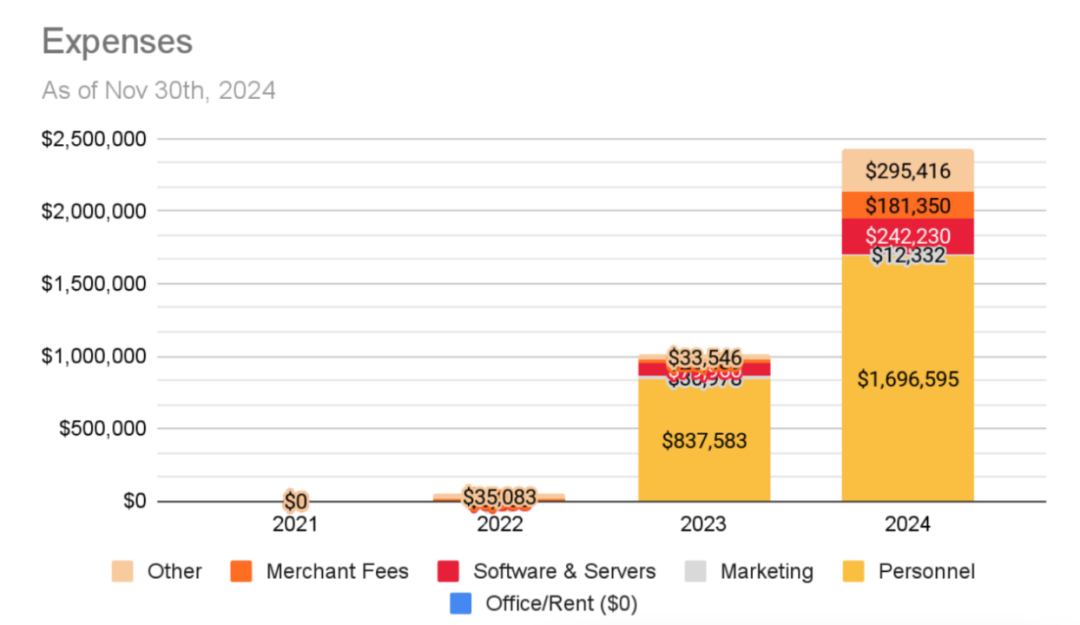Buddhist-Inspired App Becomes Overnight Hit! With 7.2 Million Users, Founder Vows to Stay Non-Profit
![]() 01/20 2025
01/20 2025
![]() 618
618
Author|Eric, Editor|Zuri
How Far Can a Non-Profit Model Stretch?
The Los Angeles wildfire continues to rage on.
As of January 17, the wildfire has claimed 27 lives, displaced over 100,000 individuals, reduced thousands of buildings to rubble, and inflicted an estimated $150 billion in damages, making it the deadliest and most destructive in Los Angeles history.
Many Los Angeles residents have lost interest in posting selfies on Instagram or watching humorous videos on TikTok. Instead, they log in daily to the fire tracking app Watch Duty to stay abreast of the latest fire-related developments.

What Makes Watch Duty So Popular?
Launched in 2021, Watch Duty is a free app that displays information such as fire conditions, wind direction, evacuation zones, and air quality index. Initially, it was primarily used by firefighters and emergency responders in the western United States, with gradual user growth.
By December 2024, Watch Duty had amassed 7.2 million active users, a significant leap from the 1.9 million recorded in 2023.
During the Los Angeles wildfire, Watch Duty was deemed superior and quicker than the local government's alert system, becoming a vital source of the latest fire information for Los Angeles residents. Data reveals that Watch Duty was downloaded 2 million times during the wildfire and surpassed ChatGPT to top the U.S. App Store charts.
So, how did it achieve this? By addressing the uncertainty surrounding fire conditions, an issue faced by all citizens during the Los Angeles wildfire.
Firstly, the Los Angeles wildfire spread rapidly due to strong winds. The arrival of the new round of seasonal strong winds, known as the "Santa Ana winds," could further exacerbate the wildfire's spread.
Many Los Angeles residents were uncertain about which areas were affected by the fire, heightening panic. Watch Duty, through a map dotted with flame icons, visually represents the fire's spread, enabling users to view the fire's real-time location and scope, thereby alleviating panic.

Secondly, text messages from local government agencies notifying citizens about fire information often have a 15-minute delay. This introduces considerable uncertainty in fire prevention, as some residents might delay evacuation due to this lag.
Watch Duty, on the other hand, provides evacuation alert functions and sends alerts within a minute when a fire threatens the user's area, urging them to evacuate promptly. Notably, Watch Duty also offers users detailed evacuation routes, aiding them in planning safe evacuation paths and shelter locations.
It can be said that during the emergency and perilous wildfire, Watch Duty provided numerous Los Angeles residents with a timely and effective "digital escape route."
Beyond its fire tracking capabilities, Watch Duty also stands out amidst various apps today.
While major apps fiercely compete for market share, Watch Duty adopts a more relaxed approach. It does not prioritize user engagement, usage time, or advertising revenue; its sole focus is on the accuracy and speed of information delivery. Watch Duty even prefers that users spend as little time as possible on the app, obtaining information and then exiting.
Currently, privacy breaches on the internet are rampant, with users accusing various social apps of data theft. Watch Duty can be used without logging in, thus collecting minimal user data, and Watch Duty has also stated that it has no intention of selling this data.
The combination of fire tracking functionality and a relaxed approach has bolstered user goodwill towards Watch Duty.
According to Watch Duty's plans, it may provide alerts for other types of emergencies beyond fires in the future and expand its services nationwide and internationally, ultimately supplanting some slower and less reliable local government alert systems.
Despite Watch Duty's current popularity and expansion goals, there are doubts about how far it can go in the future. After all, what Watch Duty aims to achieve is quite complex, requiring a substantial number of operators, yet it remains relaxed in terms of commercialization.
To address this question, we need to look at Watch Duty's founder, John Mills.

How Far Can a Non-Profit Model Take Watch Duty?
Watch Duty's founder and CEO, John Mills, personally experienced a devastating wildfire in Sonoma County, California.
In 2020, Mills' home in Sonoma County was ravaged by the Walbridge wildfire, which ultimately claimed 33 lives and destroyed 156 homes. He realized that during the wildfire, there was no consolidated source of information that could provide all the necessary information for self-protection. So, he decided to develop an app to assist people, which led to the creation of Watch Duty.
Today, Watch Duty boasts 15 full-time employees and 200 part-time volunteers, most of whom are retired or active firefighters, dispatchers, emergency responders, journalists, etc., possessing extensive professional knowledge and practical experience.
With the support of these teams, Watch Duty integrates official reports, volunteer feedback, 911 dispatch information, and other resources to verify and update fire information in real-time, ensuring its accuracy and timeliness.
Additionally, Watch Duty utilizes various third-party technologies and platforms, including Google's cloud platform and Amazon's web services. It is precisely because of these teams and technologies that Watch Duty's information delivery is more timely and accurate than traditional fire tracking apps.
To maintain the normal operation of a team comprising several hundred individuals, financial support is crucial. Watch Duty's funding sources primarily include user donations, subscription services, and institutional funding. According to a report released by Watch Duty, it received $5.6 million in funding in 2024, a 460% increase year-on-year. Among this, $2 million came from 65,500 paying members, a 400% increase year-on-year.
Furthermore, there were $600,000 from individual donors and a $2 million grant from Google. Mills revealed that Watch Duty also received a $1 million grant from an anonymous wealthy businessman.
So, where did all this money go?
The report indicates that in 2024, Watch Duty's largest expenditure was salaries for team members. Watch Duty emphasized that the company does not require an office, nor does it necessitate a large marketing budget or exorbitant travel expenses. The goal is to minimize all other costs and provide competitive salaries for all employees, as they could earn double the pay elsewhere.

It is evident that Watch Duty's core competitiveness lies in its employees rather than technology. Many employees joined out of the initial intention to reduce fire losses, which can be described as "working for love." However, compared to technology, people often bring greater uncertainty. How to unite them tests the company's management and organizational capabilities.
For now, Mills remains steadfast in the non-profit model. He stated that he is striving to build a sustainable non-profit organization to support Watch Duty's free attributes. He also took the opportunity to criticize OpenAI for shifting from a non-profit model to a profit-making model, emphasizing that he would not follow suit.
Nevertheless, it remains uncertain whether the non-profit model will hinder Watch Duty's development. How far the "working for love" model can extend remains a question mark.
References: Watch Duty, a Wildfire-Tracking App, Provides a Lifeline in Los Angeles (NYTimes), Watch Duty App Creator Says He’ll Never Pull an OpenAI (Gizmodo), Watch Duty Official Website








